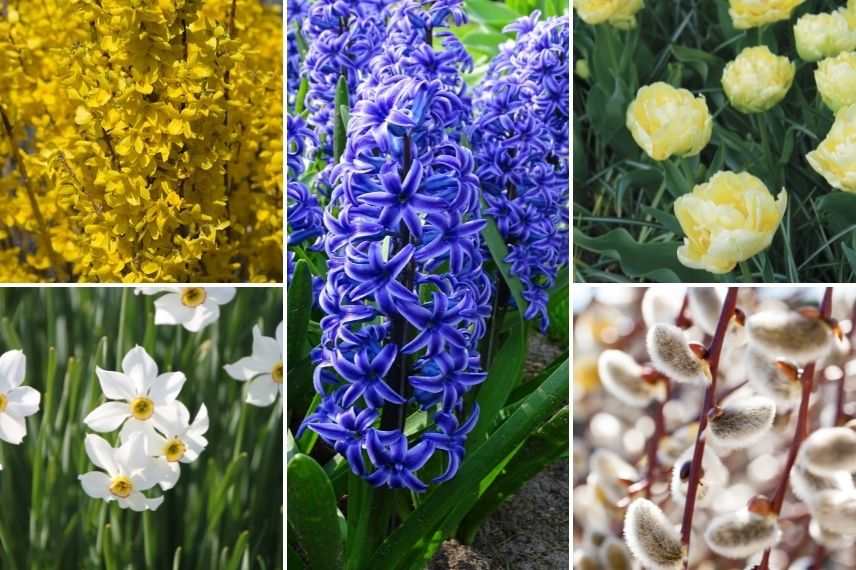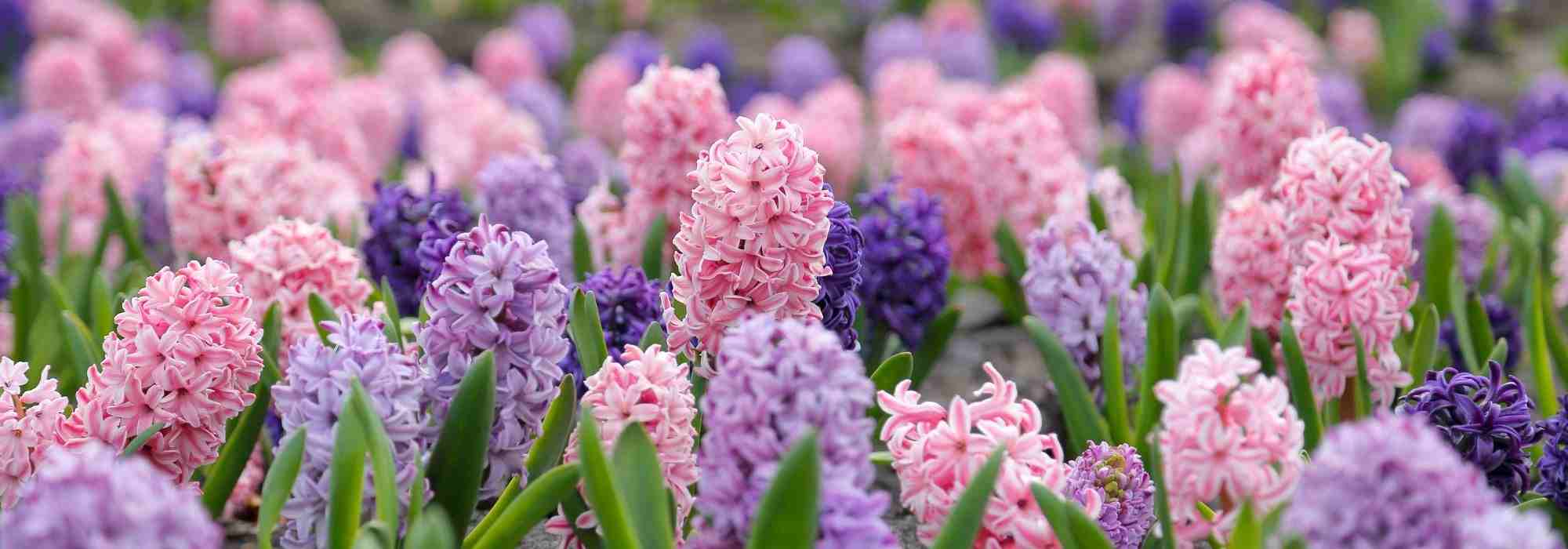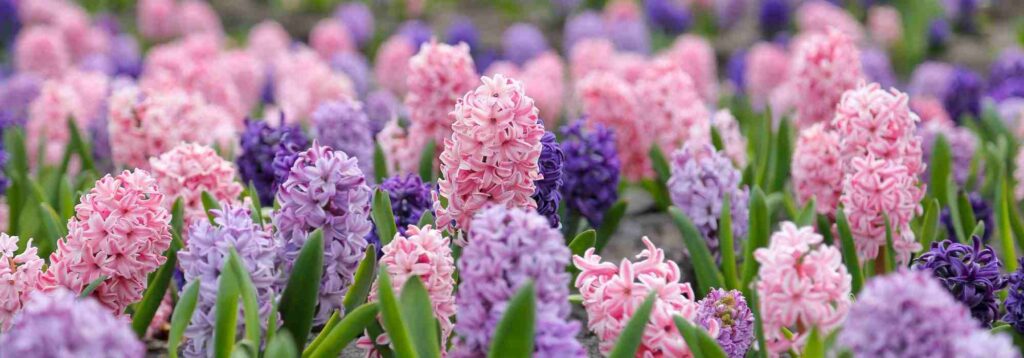
Awakening the garden in spring with their colorful blooms, Hyacinths ( sometimes called “Hyacinths”) offer a wide variety of colors . In addition, appearing from February to April, the Hyacinth flower diffuses a pleasant fragrance . This bulbous plant is a real olfactory and visual pleasure. It is for this reason that it is often forced to flower earlier and perfume the interior of the house during the end of the year celebrations. Then, in the spring, it is in charming bouquets that the hyacinth has an effect. In the ground outdoors, it is perfect for composing a spring scene with other bulbsin a border, in the foreground of beds or in front of spring-flowering shrubs. The hyacinth in pot, near the house, on the terraces or the balconies, enchants us as soon as the beautiful days arrive. Hyacinths can also be grown with perennials in a rockery that they illuminate with their colors. For all these possibilities, discover our ideas for marrying Hyacinth!
IN FLOWER POTS
To take full advantage of the scent of Hyacinth flowers in spring, plant your bulbs in planters that you will place on a windowsill. No need to go to the bottom of the garden in cool weather to compose fragrant bouquets for the interior! In a classic round pot , preferably in terracotta, combine them with other bulbs such as Narcissus , Muscaris or Tulips . Plant them at different depths depending on their size . To do this, discover our illustrated tutorial to plant your spring bulbs in “lasagna”. Another possibility: in a basin, plant your Hyacinth bulbs along with Myosotis , Daisies , Garden Primroses and Pansies which are biennial plants that also lend themselves to pot planting. Arrange your containers near the door to your home to create a welcoming entrance. Know that all varieties of hyacinths can be planted in pots. A beautiful explosion of colors!
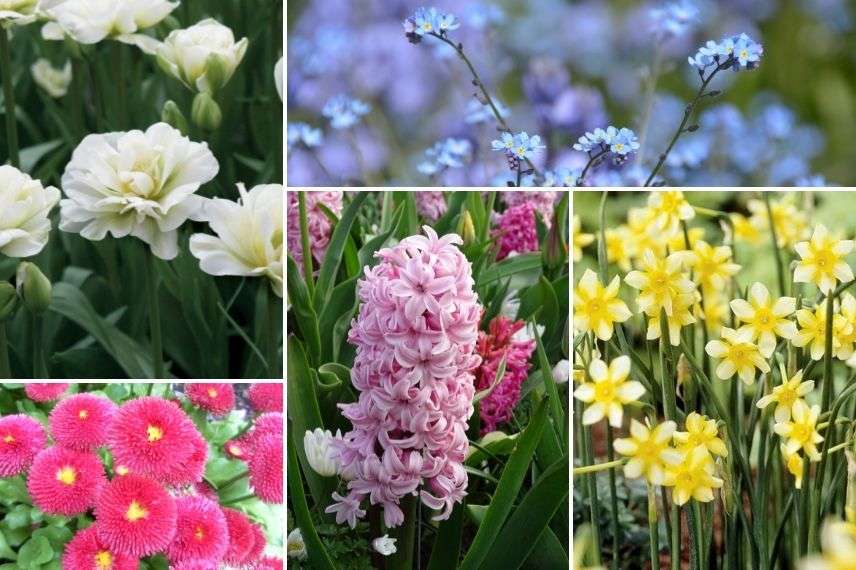
IN A BORDER WITH OTHER SPRING BULBS
Use Hyacinths to color the edge of a path when spring arrives! Border planting should be dense . Group them by color to create spots . Their fragrance is a pure delight for users of the driveway and visitors to the garden. Hyacinths go very well with other spring bulbs that have similar growing conditions. Planting takes place in autumn, so it is very easy to associate them together. For example, create borders in bright tones by alternating different flower bulbs: spring crocus, dwarf iris Iris reticulata , florist’s buttercup , small ornamental garlic Allium oreophilum .The bells of the Snowdrop bring a touch of luminosity. And finally Camassia and Fritillaria (e.g. Fritillaria meleagris ) give rhythm to the border.
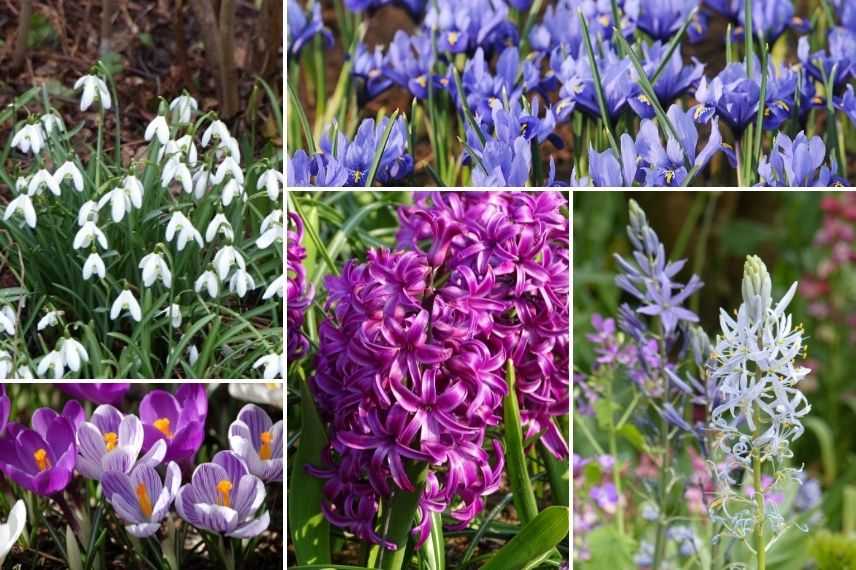
IN FRONT OF A CLUMP
In the foreground of a bed, you can also plant hyacinths with perennials . In the first row, install small plants with a creeping habit, such as Iberis sempervirens and the Caucasian Arabette . From March, the Caucasian Doronic ‘Little Leo’ lights up the garden with its simple, yellow daisy-shaped flowers. Behind these perennials, the Euphorbia des Garrigues ‘Wilcott’ brings a luminous touch thanks to its beautiful silvery foliage. A little larger, the Heart of Mary gives a romantic side to the massif by exposing its heart-shaped flowers. To prolong flowering, consider installing perennials that bloom from May. For example, a pink variety of Moss Saxifrage ( Saxifraga arendsii ‘Purpurteppich’ or Saxifraga arendsii ‘Peter Pan ‘) can take over, as well as Campanulas , carpeting plants that form beautiful, colorful cushions. These will take care of occupying the space when the bulbs are dormant. Don’t forget the Alliums which usually bloom between April and July. Of variable dimensions, they bring relief to the massif. Larger perennials should be planted in the background .
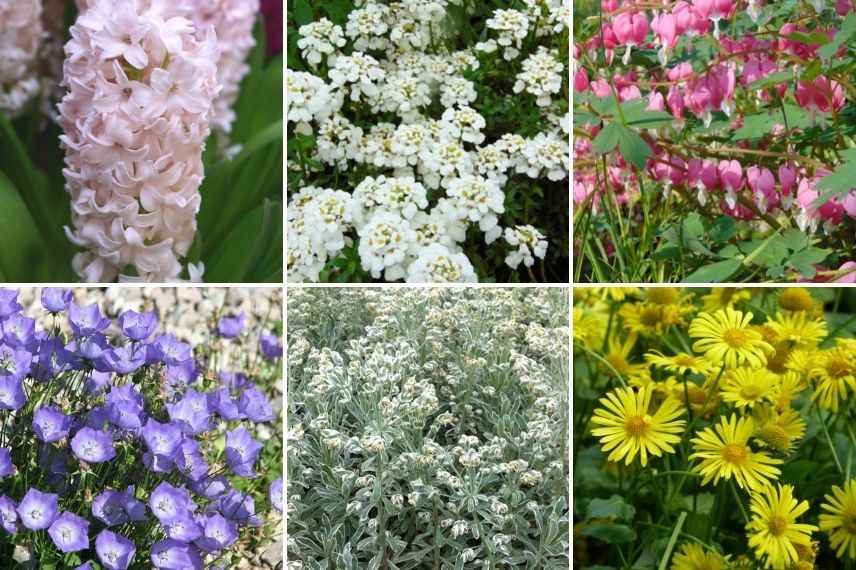
IN ROCKERY
Hyacinths can also be planted in rock gardens . To accompany them, Sedums, creeping or upright, and Houseleeks are essential succulents in these locations: draining, stony and poor soil, sunny exposure. To bring lightness, choose small grasses , such as Carex comans ‘Frosted Curls’ , Carex buchananii , Carex testacea and Stipa tenuifolia also called Angel’s Hair. Planted alongside succulents, their fine foliage provides a nice contrast. Then choose flowering perennialsto color the rockery. The diffuse Gromwell ‘Heavenly Blue’ carpets the rockery with starry flowers of an intense gentian blue. As for the very florid Mouse Ear , it easily covers spaces with its silvery gray foliage and its many white flowers. The Pasqueflower ‘Papageno’ gives an original touch to the rock garden with its semi-double fringed flowers and its ruffled fruits.
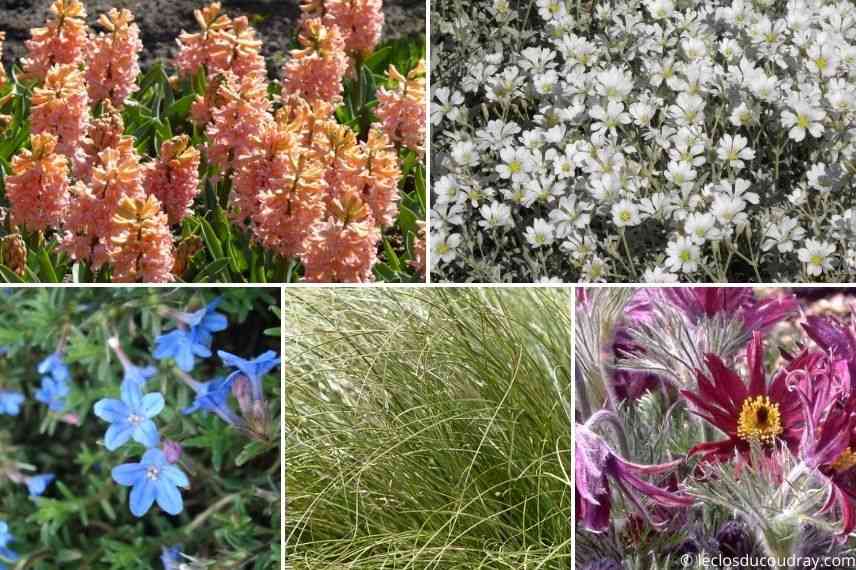
AT THE FOOT OF SHRUBS OR DECIDUOUS TREES
Use hyacinths to flower the base of your deciduous trees or shrubs , such as dogwoods ( Cornus mas , Cornus officinalis , etc.). Hyacinths, which exist in many shades, blend easily with Cornus wood, taking on beautiful orange-red or yellow hues in winter. We can mention the very decorative Cornus sanguinea , Cornus alba or Cornus stolonifera ‘Flaviramea’ . Without their leaves, they will let the sun shine through in winter and early spring for good hyacinth growth. The False Hazel ( Corylopsis) which is dressed in a yellow bloom very early at the beginning of the year can also be highlighted by a bed of Hyacinths. The flowering period of hyacinths also coincides with that of cherry blossoms . You will find our selection of the 7 most beautiful flowering cherry trees in our advice sheet. You can also plant Hyacinths around spring-flowering shrubs: Lilac , Forsythia or white spring-flowering Spirea, such as Spiraea prunifolia or Spiraea thunbergii . Make sure your bulbs are well exposed to the sun or light partial shade. Too much shade would be detrimental to their flowering.

IN A SIMPLE BOUQUET
With its wide range of colors, the Hyacinth fits easily into flower arrangements. For the Easter holidays, yellow is often a very present color. The branches of Forsythia are frequently used in the composition of vase bouquets. These yellow flowers can be associated with white or yellow daffodils , more or less bright. For a soft bouquet, mix pink with yellow and opt for pink hyacinths such as Hyacinthus orientalis ‘Fondant’ or Hyacinthus orientalis ‘China Pink’ . Or on the contrary, combine yellow with a brighter color like the midnight blue of the Hyacinth ‘Blue Pearl’or the slightly purplish blue flowers of the ‘Crystal Palace’ Double Hyacinth . The Tulip , too, can be associated with these fragrant flowers. Finally, add a few branches of Goat willow bearing sweet catkins in winter.
Tip: to enjoy your hyacinth in a bouquet for longer, choose flower stalks whose flowers are closed or slightly open. Keep the bulb. Using a knife, cut it along its height following the floral stem so as to have a bulb with 4 sides. Fill the vase with water without exceeding the bulb.
Be careful, the hyacinth flower can be irritating to the skin, we advise you to handle it with gloves.
